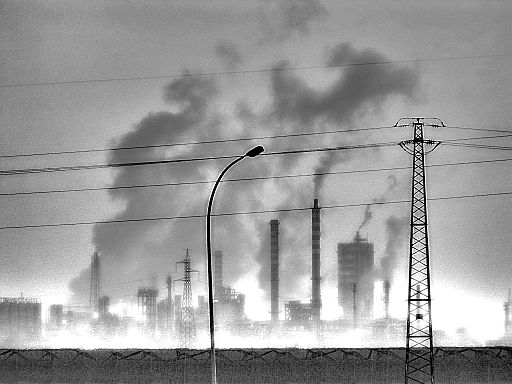A carbon tax on a broad base of combustion of fossil fuels together with recycling some of the revenue windfall to low income households would reduce pollution at least cost, provide equity and contribute to a required sustainable budget. Stated policies of both the Coalition and Labor to reduce greenhouse gas emissions to meet Australia’s Paris commitment of a 26-28% reduction by 2030, or more, are less effective in meeting the low cost, equity and budget effects objectives.
Why a price on pollution?
Placing a price on pollution, either as an explicit carbon tax or as an emissions trading scheme, is widely recognised as the policy instrument to reduce greenhouse gas emissions at least cost. The price provides a signal to all businesses and households to use their private information to choose less polluting methods of production and less pollution intensive products to purchase.
The government revenue windfall from taxing emissions or auctioning pollution permits can be used to cushion households for the higher cost of living caused by the price on pollution. And/or, some of the revenue windfall can be used to reduce Australia’s structural budget deficit.
An extended form of the Gillard government carbon tax of 2012-14 could be employed. About 80% of Australian greenhouse gas emissions from electricity generation, transport (with petroleum products taxed), and large industry polluters can be included in the tax base; agriculture and small firms would be exempt because of high transaction costs. Up to 1,000 large firms initially would pay a price on pollution. These firms in turn pass on higher prices to reflect pollution intensity. The higher relative prices drive improvements in energy efficiency, and less pollution, by almost all businesses using electricity and transport as inputs and all household purchases.
If there is a political desire to maintain household living standards, especially for those on lower incomes, some of the revenue windfall can be returned to households while still maintaining higher relative prices for the more pollution intensive products.
Even if all of the revenue windfall is recycled to households, at worst the budget bottom line is no change.
The Emissions Trading Scheme (ETS) proposed by Labor
Labor is proposing a dual ETS, one for electricity and one for other business polluters, but not to include transport. The choice of two ETS systems rather than one, and the exclusion of petroleum products for transport in the scheme, reduces the potential base for finding least cost ways of reducing pollution, and it adds unnecessary complexity.
More important, the cap and offset structure of the Labor proposed ETS grandfather allocates pollution permits to industry, rather than auctions them for a revenue windfall. As illustrated by the early version of the European Union ETS, gifting the permits to industry provides a windfall gain to the industry recipients. Not surprising, industry has been at the forefront in advancing this model.
At the same time, the market price for the limited permits to pollute adds to polluter opportunity costs; these higher costs are passed forward to households as higher prices for pollution intensive goods and services. There is no government revenue windfall, and any compensation to households for the higher cost of living will add to the budget deficit.
Restructuring the Labor proposal for one ETS scheme for all large polluters, including the suppliers of petroleum products used in transport, and auctioning the permits rather than gifting them would meet the objectives of reducing pollution at lowest cost, provide a government revenue windfall, with some available to compensate low income households for the higher cost of living.
The Direct Action Subsidy proposed by the Coalition
To date the Coalition has conducted three rounds of its Direction Action scheme. In a reverse auction model, it invites industry and other organisations each quarter to tender a subsidy price to reduce greenhouse gas emissions over the next 3-10 years. From the first three rounds, most of the approved projects have involved changes in land management.
A subsidy scheme such as Direct Action will involve much higher costs per unit pollution reduced than a tax or an ETS. First is the problem of additionality. Government with limited information has to establish a base case or business as usual scenario in order to assess proposed decision changes that would occur with and without the subsidy. Second, while a polluter pays system initially involves less than 1,000 businesses, the majority of businesses and households potentially could bid to change decisions to reduce pollution under the Direct Action model. But, many with low cost ways to reduce pollution will not tender for the subsidy because of complexity and high transaction costs.
Since the subsidy compensates polluters for the extra costs of less polluting decision choices, polluters are at least as well off. Also, and a major claim of the Coalition, there are no higher costs of living passed on to households.
But, the subsidy adds to the budget deficit. Ultimately households will bear the subsidy and cost of reducing pollution via higher taxes in the future. Or, the subsidy adds to Australia’s structural deficit problem.
Further Reading
1. Cost effectiveness of the price instrument
2. Goulder, L and Schein, A ‘Carbon Tax Versus Cap and Trade: A Critical Review’, Climate Change Economics, 4(3), 1-23, 2013.
3. Clark, H ‘The Basic Economics of a Carbon Tax’, Australian Economic Review, 44(2), 123-136, 2011.
4. Gillard, J Swan, W and Combet, G, Clean Energy Future, Australian Government, Canberra, 2011.
5. Labor policy: www.alp.org/climatechangeactionplan
6. Coalition policy: Australian Government, Emissions Reduction Fund White Paper, Canberra, April 2014.
7. Peter Christoff, ‘Australia’s Climate Targets Still Out of Reach’, The Conversation, Nov 13 2015.





Recent Comments